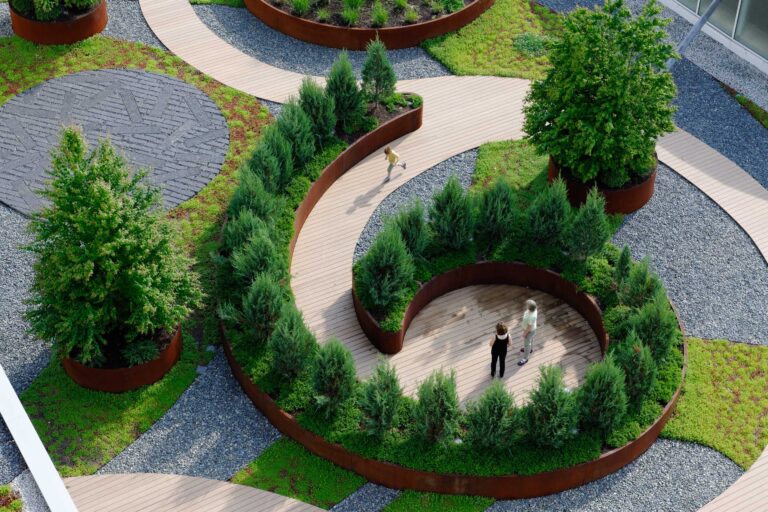Using Humble Materials and Spaces With Raw Appeal, This Trend Celebrates the Beauty of the “Unfinished” and the Power of Repurposing
Urban lofts make the most of high ceilings and feature uniquely designed open floor plans that perfectly match a contemporary lifestyle. Shaping spaces with multiple functions—kitchens, for example, that are simultaneously dining rooms and living areas—is now the norm. In Manhattan’s Tribeca North Historic District, this 3,000-square-foot apartment is nestled in an 1880s-era warehouse.
The team at Andrew Franz Architect created a large entertaining area visually connected to a new roof terrace that offers views of the Hudson River and harbor to the west, the Empire State Building to the north, and the Financial District to the south.
“Our intention was to create a dialogue between new and old through the use of decisively modern and finished materials, along with restored and rougher reclaimed materials from the loft,” says Andrew Franz.
“We used smooth reflective surfaces of steel, glass, hand-made tile and lacquer to juxtapose the roughness of masonry and heavy timber. We restored the brick walls and columns back to their original condition.”
When focusing on an industrial look, it is crucial to preserve the history of the place while giving it a new life with a modern twist.
“We felt the building had a strong story to tell and tried to honor that narrative, rather than whitewashing it,” adds Franz.
Characterized by features such as exposed beams and pipes, brick walls, concrete floors, steel columns and staircases, industrial-style dwellings also use materials such as metal and reclaimed wood, and a muted color palette of gray, black, and white.
Mixing new and vintage pieces sourced in thrift stores and flea markets is key to combining raw with the refined, and contemporary with classic, in a way that form and function constantly interact. In order to soften the atmosphere and make the space warmer, introduce textures and pops of colors through pillows, rugs, artworks and plants.
The concept of repurposing is also at the heart of industrial décor, inviting designers and dwellers to use their imaginations. A wooden crate can be turned into a table, old road signs into decorative elements, ladders into shelves, and more. While the aesthetic of an industrial space is distinct, it is based on the ideas of prohibiting excess, respecting the past and transforming to align with the present time.
Combining neutral tones with different types of materials and showcasing vintage light fixtures and pieces of furniture are some ingredients to achieve an industrial feel in your home.
Photo courtesy of Albert Vecerka/Esto

